Within the Bovidae family, among the most interesting may be the last of the ovibovines, the muskox (Ovibovis moschatus). The muskox’s name is misleading, as it’s actually a closer relative of sheep and goats rather than cattle. The name refers to the musk emitted by males during seasonal rut, which serves to attract females. During the Pleistocene, muskoxen once had a wide Arctic distribution that was reduced to a more restricted range across Alaska, Northern Canada, and Greenland in the modern era. This species is among the largest of extant members of the Caprinae subfamily, ranging from 4-5 feet tall at the shoulder and ranging from 200-400kg in weight. While historical populations were depleted these animals are currently classified as ”Least Concern” due to reintroduction efforts in North America and Eurasia raising contemporary populations to between 80,000-120,000 individuals. These animals eat grass, willows, lichen, and moss. Predators include arctic wolves, grizzly bears, and polar bears.
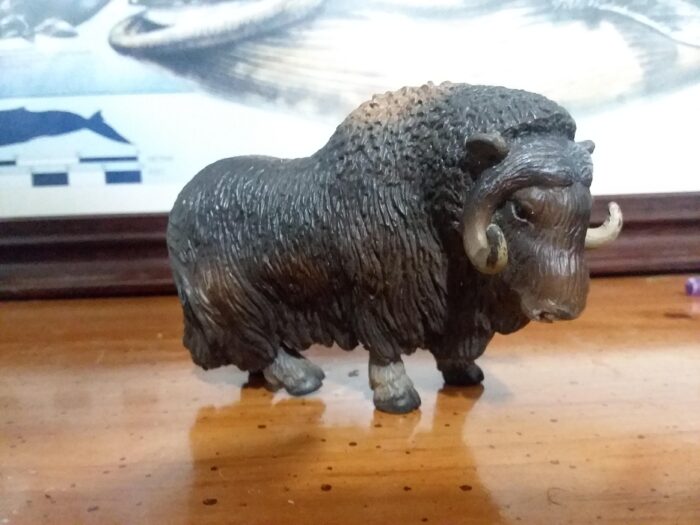
Today marks my first review of a caprid. This muskox was released in 2004 and is the only figure of this species from Schleich. This figure also appears to have been outsourced from Maia & Borges. That appears to be common occurrence for Schleich figure released in the early 2000s. Time to take another look at what I’ve been holding on to all these years.

The figure is about 7.3cm tall at the shoulder. That’s roughly in the 1:15-1:20 scale for adult muskoxen. The size of the horns and the bridge formed across the head indicates this is a male individual. As for the sculpt, it seems in line with the other figures released by the company around this time.
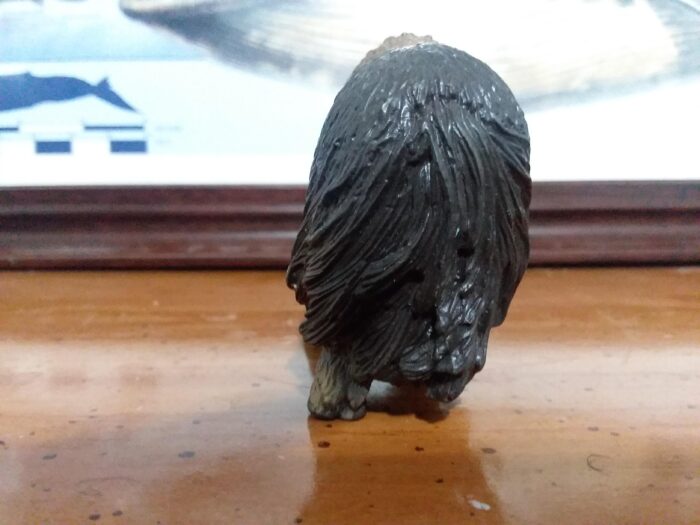
While modern figures achieved this effect to greater accuracy, the texture on the wooly coat is quite convincing for the time.
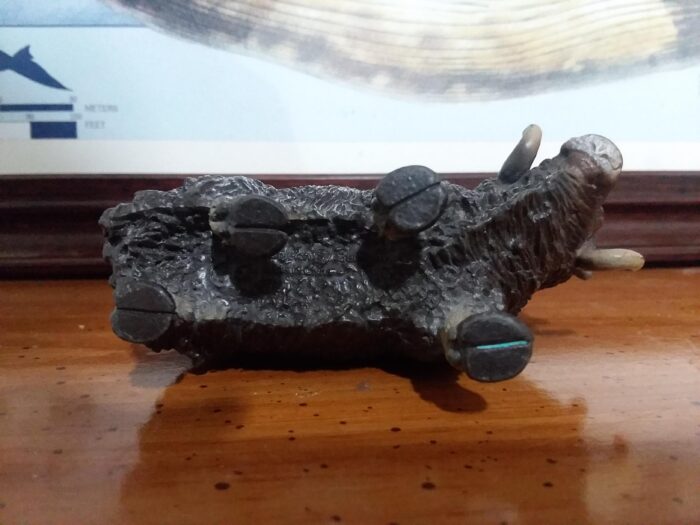
Like some of the other Schleich 2000s figures, the feet appear to be oversized, but it doesn’t appear as distracting on this musk ox.

The horns are also nicely detailed as lines form along the length of the horns. Admittedly I don’t think the face looks as convincing as it could have been, which I think was better captured by the American bison released the same year. Otherwise, I find that this is among the higher-quality sculpts from Schleich during this era.
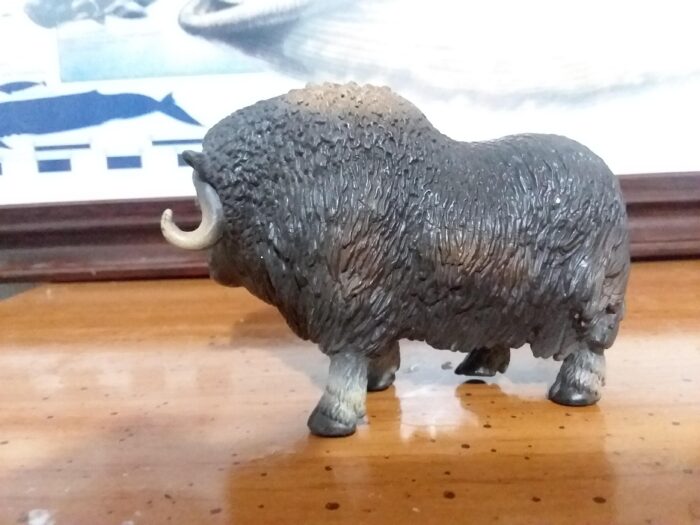
The paintjob is is pretty effective. It’s mostly a dark gray with light-brown accents with a creamy color for the tips of the horns and the hair surrounding the hooves. The base of the horns are darker than what I have scene in most photos, otherwise everything seems accurate enough for this species.
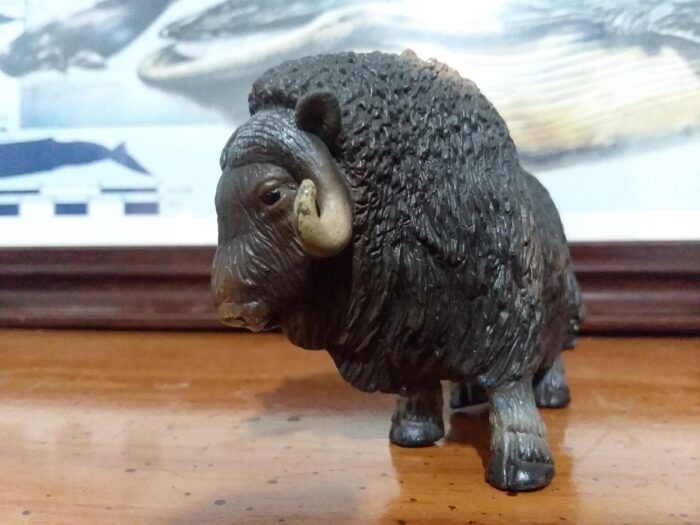
I’d easily say the 2004 Schleich muskox is still among the nicer figures for this species out there. However, I may sooner recommend someone purchase the CollectA figure, which seems much more realistic. Nonetheless, this was a very nice attempt from Schleich. Unfortunately, this muskox was quickly retired in 2007 and no update figure has been presented. Anyone aiming to add this figure to their collection need to seek secondhand sellers.
Disclaimer: links to Ebay and Amazon on the AnimalToyBlog are affiliate links, so we make a small commission if you use them. Thanks for supporting us!



